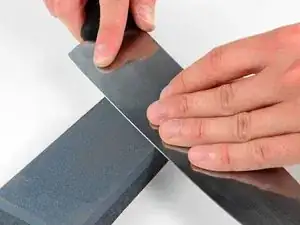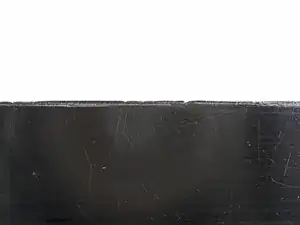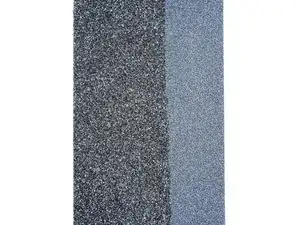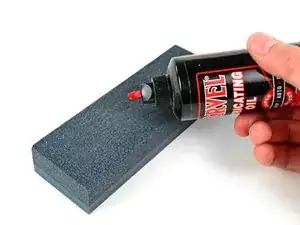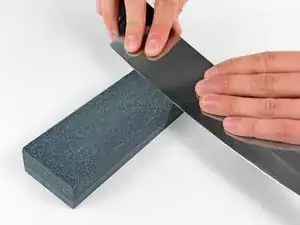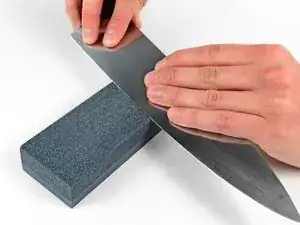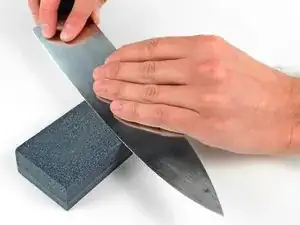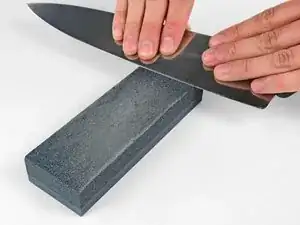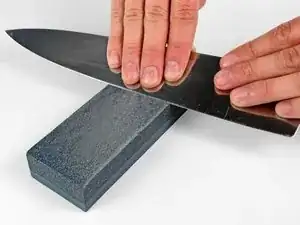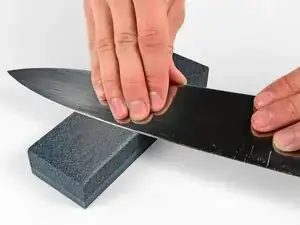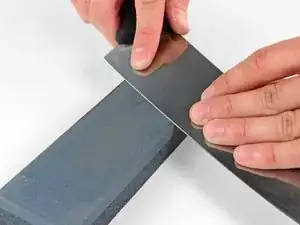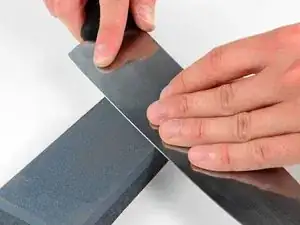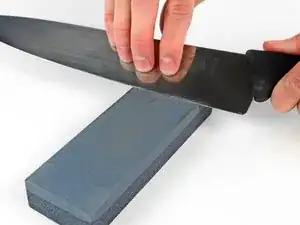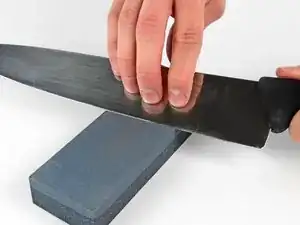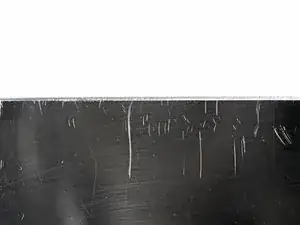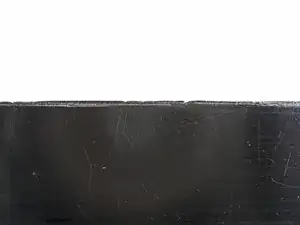Einleitung
Knives get dull. It's a fact of life. Most non-serrated steel knives can be sharpened using inexpensive sharpening stones that can be found at most hardware stores.
Werkzeuge
-
-
Most knives work great out of the box, but gradually dull and get chipped over time. A close-up of the blade we'll be sharpening shows what can happen after several years of abuse.
-
-
-
The sharpening stone I'm using is dual grit. The first picture is a side view of the stone. The coarse grit is on the left, and the fine grit is on the right.
-
-
-
With the edge of the blade in contact with the large, flat side of the stone, angle the blade about 20-25 degrees from the flat face of the stone.
-
While applying light pressure, push the blade forward along the face of the stone.
-
Continue to sharpen the length of the blade until the cutting edge has a uniform bevel along its length. If there are chips, continue to sharpen that area until they are gone. The key is to keep the knife angled consistently away from the stone while uniformly sharpening the length of its blade.
-
-
-
Once one side of the blade has been uniformly sharpened with the coarse grit, repeat the process to uniformly bevel the length of the cutting edge on the other side of the knife.
-
-
-
Once you have removed the nicks and you've uniformly beveled both sides of the knife's edge, flip the stone over to use the fine grit side.
-
Repeat the process which is detailed in the previous steps to uniformly sharpen both sides of the blade with the fine grit stone.
-
-
-
Again, the key is to apply uniform pressure while pushing the knife both forward and to the side while holding the knife at a consistent 20-25 degree angle from the stone.
-
Once the knife has been uniformly sharpened on both sides of the blade, wipe it with a towel (without slicing yourself) and inspect its edge.
-
-
-
When finished, the blade's edge should look like the blade in the first picture. It should be beveled at a constant angle and generally will look uniform when viewed from different angles in the same light.
-
As a comparison, the blade before being sharpened can be seen in the second picture.
-
To reassemble your device, follow these instructions in reverse order.
